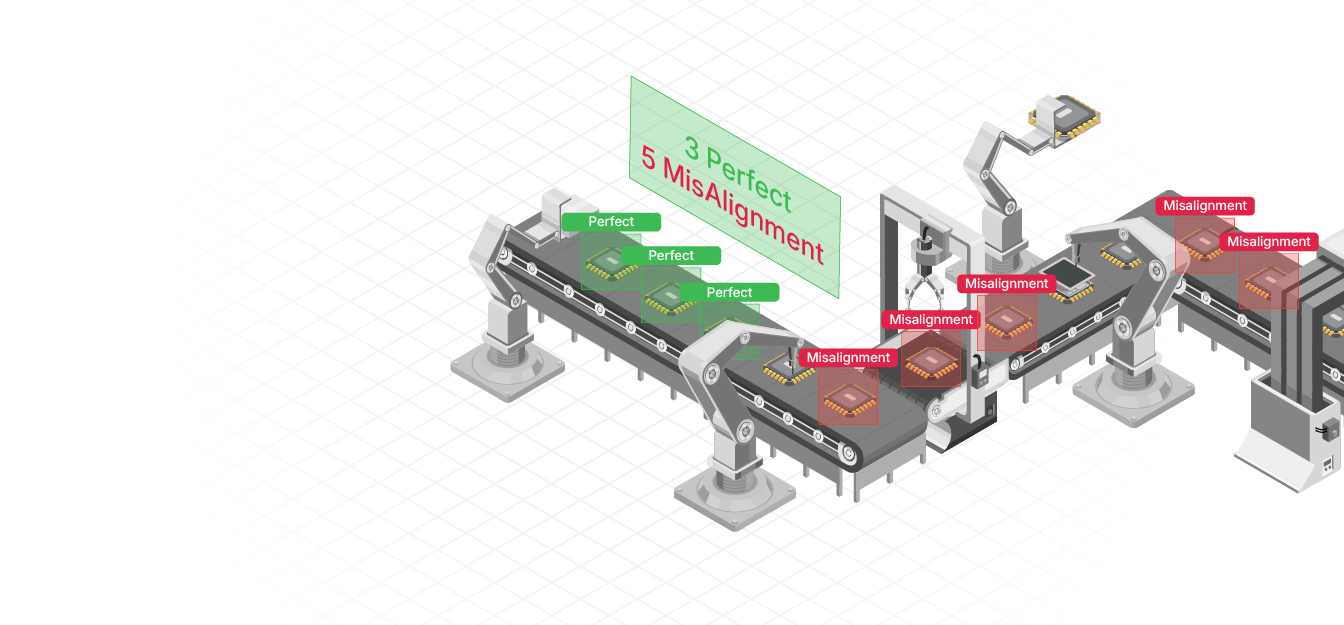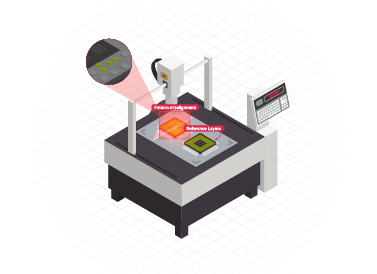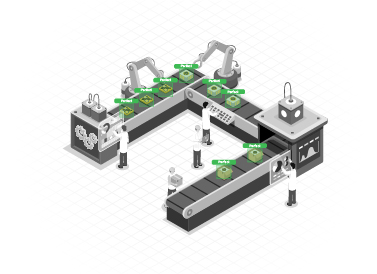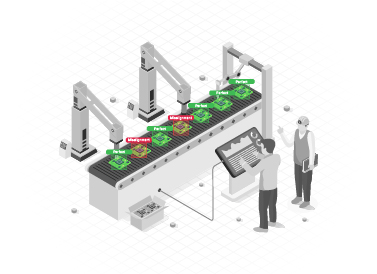Alignment And Overlay Accuracy
Nanometer Precision. Zero Overlay Errors. Layered Perfection Starts Here.


In semiconductor manufacturing, the success of multi-layer lithography depends on one thing: precision overlay. A nanometer-scale misalignment can trigger a cascade of failures, shorts, opens, or pattern mismatch. Traditional overlay systems, though reliable, are static and can miss real-time deviations.
AI-powered Alignment and Overlay Accuracy solutions use real-time computer vision to detect and correct misalignment during lithography. By continuously comparing new patterns with reference layers, AI vision ensures every overlay falls within strict tolerances, even on advanced nodes.
This reduces overlay-related yield loss, cuts rework cycles, and ensures multi-patterning integrity.
At advanced nodes (5nm/3nm), even tiny overlay shifts can cause electrical shorts or performance drift.
Thermal expansion or tool wear causes gradual shifts that traditional static calibration can’t catch.
Without real-time feedback, overlay errors often go unnoticed until after etching or metrology.
Multiple exposure passes increase the chance of cumulative misalignment, especially on dense layers.
Computer vision verifies overlay precision during exposure, not just in post-processing.
AI models trained to identify and measure overlay deviation at single-digit nanometer tolerances.
Learns and predicts overlay drift based on historical tool movement, exposure conditions, and material response.
Feeds deviation data into stepper/aligner systems for automatic compensation and dynamic realignment.


We begin by integrating CAD-based reference layers or GDSII data to set visual baselines for overlay comparison.
Specialized cameras with nanometer resolution are installed near lithography tools. Calibration includes pixel-level correction and motion compensation for fast-moving wafer stages.
Using archived mismatch incidents, our AI is trained to distinguish between acceptable variation and true overlay faults across complex geometries and resist layers.
As patterns are exposed, real-time visual feedback is compared to reference alignment. Detected deviation values are immediately sent to the scanner or aligner system for correction during the same pass.
Stay updated with the trending and most impactful tech insights. Check out the expert analyses, real-world applications, and forward-thinking ideas that shape the future of AI Computer Vision and innovation.
Collaboration creates a story. Some are born from timing, others from shared ambition. But the partnership between WebOccult and Deeper-i began from something subtler, a mutual belief that intelligence should live closer to the world it serves. For years, Vision AI has been mastering the art of seeing, while Edge AI has been perfecting the […]

CEO & Co-founder
Any object that leaves a factory belt carries an identity. It may appear as a string of numbers etched into metal, a barcode printed on paper, or a label attached to packaging or glass material. Together, these small symbols form the nervous system of modern industry. They track movement, record responsibility, and ensure that everything […]

CEO & Co-founder
Every city breathes in patterns. Cars move, pause, and disperse in a rhythm that repeats itself through hours and seasons. Beneath this rhythm lies a kind of language, the pulse of motion that defines how urban life organizes itself. Yet, for all the technology that has reshaped cities, one of the simplest and most visible […]

CEO & Co-founder